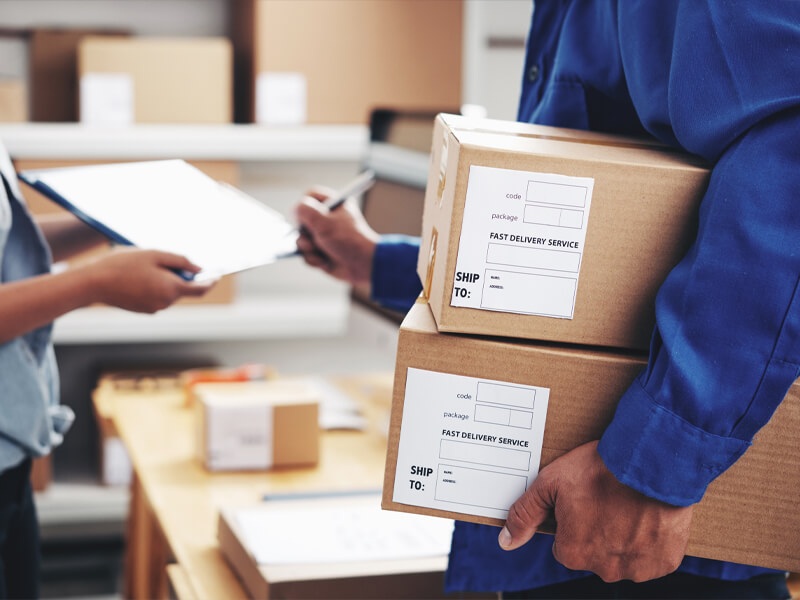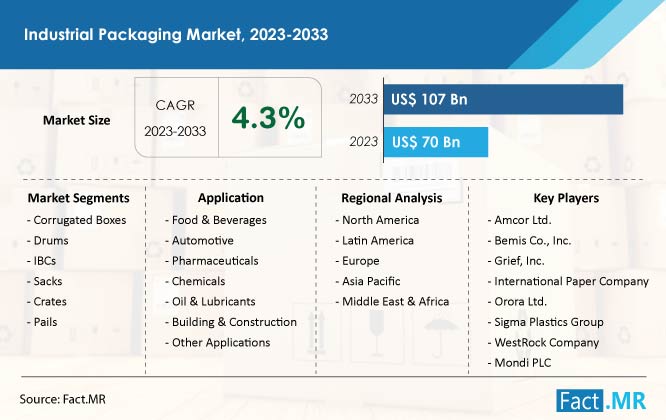Ingenious Industrial Packaging Solutions: Raising Your Products
Ingenious Industrial Packaging Solutions: Raising Your Products
Blog Article
Reliable Industrial Recycling Solutions for Lasting Packaging: A Comprehensive Overview
That's where this extensive overview on effective commercial recycling options for sustainable product packaging comes in. By checking out crucial areas such as product packaging material option, creating for recyclability, applying reusing facilities, working together with recycling partners, and tracking and measuring recycling success, this guide will certainly equip you with the understanding and tools essential to make educated choices and drive positive adjustment within your organization. Whether you're a packaging specialist, sustainability supervisor, or merely interested in the subject, this guide will provide beneficial insights and approaches to help you browse the world of lasting product packaging.
Packaging Product Selection
The selection of packaging products plays a vital function in ensuring the sustainability of industrial reusing solutions. The choice of products is vital in lessening ecological influence and taking full advantage of recycling effectiveness when it comes to lasting packaging. Choosing the right materials can assist lower waste generation, conserve resources, and promote a round economy.
Products like cardboard, paper, glass, and specific kinds of plastics can be reused numerous times without shedding their top quality. On the other hand, materials that are hard to reuse, such as blended plastics or non-recyclable compounds, can develop challenges for the recycling process and may end up in burners or landfills.
An additional consideration is the usage of eco-friendly and sustainable materials. Product packaging made from renewable energies, such as plant-based plastics or biopolymers, can aid lower dependency on fossil fuels and minimize environment adjustment. Additionally, naturally degradable products damage down normally over time, decreasing the buildup of waste in land fills.
Furthermore, the weight and volume of product packaging products must be minimized to lower transport costs and power consumption. Light-weight products not only need fewer resources during manufacturing however also add to reduce carbon exhausts throughout transport.
Designing for Recyclability
In order to make certain the recyclability of packaging materials, thoughtful style is important. Creating for recyclability entails producing product packaging that can be quickly arranged, divided, and refined in reusing facilities. One crucial facet of creating for recyclability is the choice of products. Product packaging designers must focus on making use of products that are widely approved for recycling and have developed reusing infrastructures. Products such as glass, light weight aluminum, and certain kinds of plastic, like animal and HDPE, are typically reused and need to be favored over products that are tough or pricey to reuse.
One more vital factor to consider in creating for recyclability is the removal of unnecessary components or products. By decreasing the variety of layers, layers, and added components, packaging can be made easier and much easier to reuse. Additionally, designers must aim to reduce making use of mixed products, as they can complicate the reusing process.

Implementing Recycling Framework
Reliable execution of recycling framework is important for the success of commercial reusing remedies. Without correct facilities in place, the recycling procedure comes to be ineffective and ineffective, impeding the general goal of sustainable product packaging.
To implement recycling framework efficiently, a number of vital aspects require to be considered. There need to be an efficient collection system that helps with the splitting up and collection of recyclable materials. This can include designated reusing containers in public areas, along with partnerships with waste administration firms for curbside pickup and sorting.
When accumulated, the recyclable materials require to be delivered to recycling centers in a timely fashion. This requires reliable logistics and transport networks, making certain that the products reach the appropriate centers without hold-up.
At the reusing centers, advanced sorting and processing innovations need to be in area to divide different sorts of materials effectively. This consists of making use of automated sorting makers, optical scanners, and hand-operated sorting techniques.
Additionally, there should be a durable market need for recycled products. This can be achieved via cooperations with manufacturers and markets that use recycled products in their manufacturing procedures. Developing a steady market for recycled materials incentivizes the reusing sector and promotes the round economy.
Working Together With Recycling Partners

One trick aspect of teaming up with recycling companions is the see this site establishment of clear interaction networks. It is important to establish open lines of interaction to help with the exchange of details, updates, and responses. This enables both events to remain notified about the development of reusing efforts and resolve any type of challenges or concerns that may develop.
Additionally, collaboration can entail collaborations in executing and developing reusing programs. Reusing companions can give beneficial understandings and advice in developing efficient collection systems and establishing one of the most ideal recycling technologies. By collaborating, services and recycling partners can optimize the reusing procedure and decrease waste.
In addition, cooperation can extend beyond the operational elements of recycling. It can also encompass advocacy and education efforts. By signing up with pressures, companies and reusing companions can raise understanding concerning the importance of reusing and promote the fostering of lasting product packaging practices among customers and various other stakeholders.
Tracking and Measuring Recycling Success
To make certain the effectiveness of industrial reusing services and the success of lasting packaging goals, it is important for organizations and their recycling companions to develop an extensive system for monitoring and determining recycling success (industrial metal packaging). Tracking and gauging reusing success allows businesses to examine the effect of their reusing initiatives, determine locations for renovation, and set meaningful targets for future progress
One way to track recycling success is with the usage of data collection and analysis tools. By collecting information on the quantity of packaging waste produced, the percentage of waste that is recycled, and the sorts of materials being reused, services can acquire useful insights right into their recycling efficiency. This information can then be analyzed to recognize trends, patterns, and locations of inefficiency.
Another crucial element of monitoring and gauging recycling success is establishing standardized and clear metrics. This allows businesses to compare their efficiency versus market benchmarks and track their progress over time. Metrics such as reusing rates, waste diversion rates, and greenhouse gas emissions can supply a measurable action of a business's reusing success.

Conclusion
To conclude, carrying out efficient commercial recycling options for lasting product packaging needs cautious consideration of packaging product option, creating for recyclability, executing reusing facilities, working together with reusing companions, and tracking and gauging recycling success. By integrating these techniques, services can add to a more environmentally-friendly and lasting technique to packaging, minimizing waste and promoting the round economic situation.
By discovering crucial areas such as packaging material choice, designing for recyclability, applying recycling infrastructure, teaming up with recycling companions, and tracking and gauging reusing success, this guide will certainly outfit you with the expertise and tools essential to make enlightened choices and drive positive change within your company. Product packaging developers need to focus on the use of products that are widely approved for recycling and have actually established recycling frameworks.Cooperation with recycling partners is important for the effective execution of industrial reusing services and the success of sustainable product packaging goals. By signing up with forces, companies and reusing companions can increase recognition concerning the significance of reusing and advertise the adoption of sustainable packaging techniques among customers and various other stakeholders.
By accumulating data on the quantity of product packaging waste generated, the percent of waste that is recycled, and the types of materials being recycled, businesses can obtain useful insights into their reusing efficiency.
Report this page